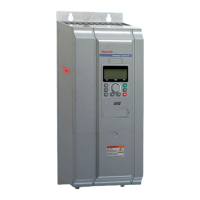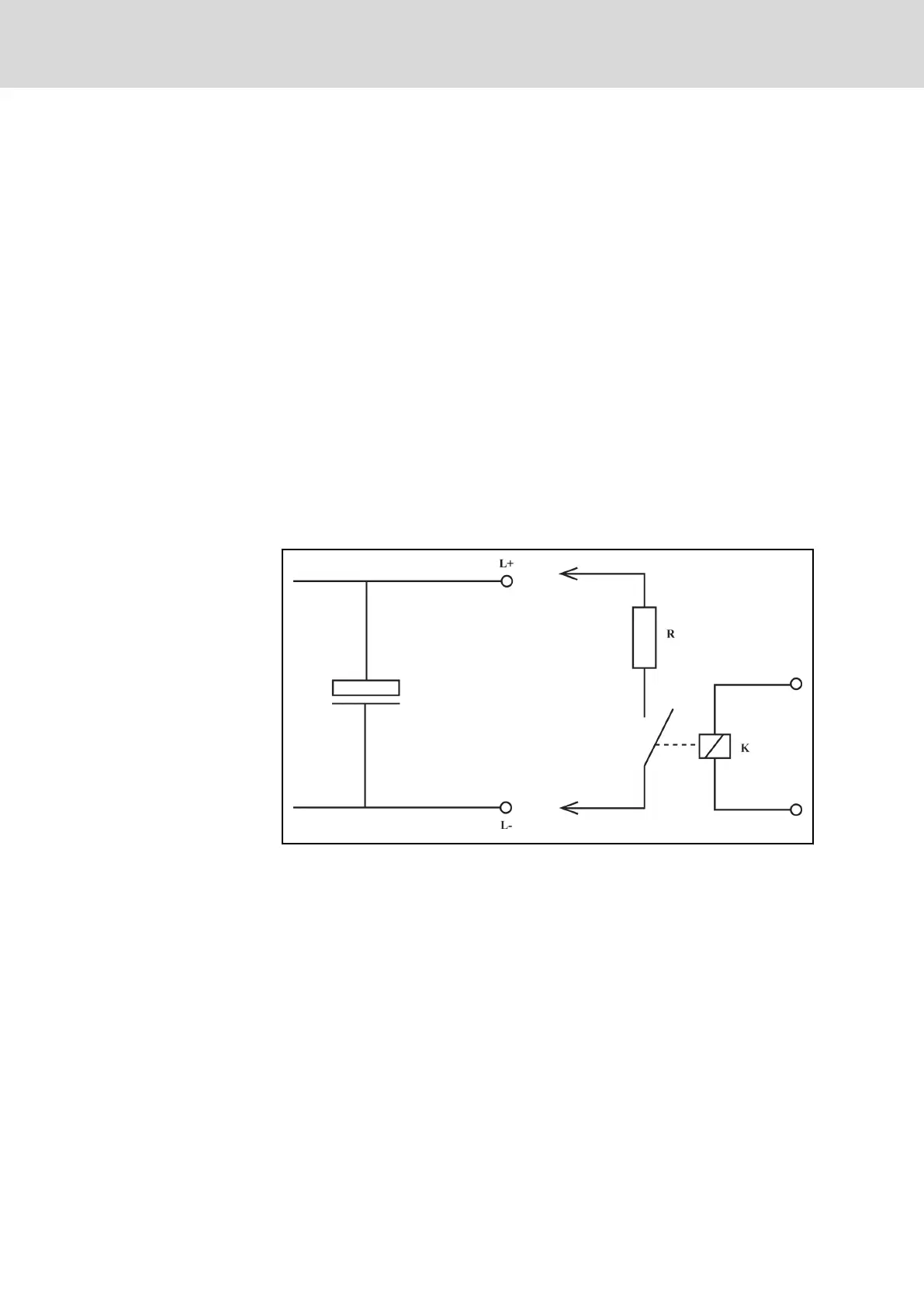11.2 Discharging of Capacitors
11.2.1 Discharging of DC Bus Capacitors
In the frequency converters, capacitors are used in the DC bus as energy
stores. Energy stores maintain their energy even when the supply voltage
has been cut off and have to be discharged before somebody gets in contact
with them. Discharging devices have been integrated in the frequency con‐
verters; within the indicated discharging time, these devices discharge the
voltage below the allowed 50 V.
Frequency converters have been dimensioned in such a way that after the
supply voltage was cut off, the voltage value falls below 50 V within a dis‐
charging time of a maximum of 30 minutes.
To shorten the waiting time until voltage has fallen below 50 V, you can use a
discharging device described below.
11.2.2 Discharging Device
Operating principle
A contactor is installed to switch a resistor to the terminals L+ and L- of the
DC bus connection to discharge the capacitors. The contactor is activated via
a control input which is supplied with appropriate control voltage.
R Discharging resistor
K Contactor contact
Fig. 11-3: Operating principle of discharging device
Dimensioning
The individual components have to be sufficiently dimensioned:
● Value of the discharging resistor: 1,000 Ω and at least 1,000 W.
● The discharging resistor and the contactor contact have to withstand the
loads of practical operation (for example in the case of frequent use of
the discharging device of the occurring continuous power).
● The contactor contact has to withstand the occurring direct voltage of a
minimum of 1,000 V.
● The contactor contact has to withstand the occurring discharge current
according to the resistance value that is used, i.e. 1 A with 1,000 Ω.
Bosch Rexroth AG DOK-RCON02-FV*********-IB08-EN-P214/259
Rexroth Frequency Converter Fv
Additional Information

